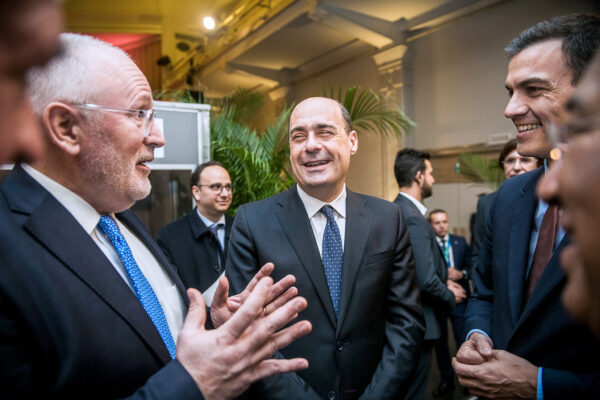
The Dutch parliamentary elections in November are shaping up to become a three-way race.
Outgoing prime minister Mark Rutte’s People’s Party for Freedom and Democracy (VVD) is neck and neck in the polls with the conservative Farmer-Citizen Movement (BBB) and a joint list of the Labor Party and Greens. All three have between 15 and 18 percent support.
Geert Wilders’ nationalist Freedom Party is polling in fourth place with 9 to 12 percent. Ten other parties are below 7 percent.
That makes it hard to imagine a coalition government that doesn’t include at least two of the three largest parties. The VVD (of which I am a member) may need to choose between a coalition with the right or the left. Both pose risks. Either would require a third and probably a fourth party for majority.
Timmermans returns home
Rutte’s unexpected resignation after thirteen years in power, and seventeen years as liberal party leader, accelerated plans for a left-wing merger. Frans Timmermans, the Netherlands’ EU commissioner, is the most popular candidate by far to lead a united Labor-Green list.
The last time Labor won an election was in 1998. In 2010 and 2012, it fell just one and three seats short, respectively, of Rutte.
Dilan Yeşilgöz, the outgoing justice minister, has been nominated by the VVD to succeed him. If she wins, she could become the Netherlands’ first woman and first foreign-born prime minister.
The BBB does not yet have a prime ministerial candidate. It won the provincial elections in March, drawing voters who oppose cuts in livestock farming to reduce ammonia pollution away from the Christian Democrats and smaller right-wing parties. Leader Caroline van der Plas has said she isn’t fit for the role.
Centrist parties in disarray
The Christian Democrats have yet to find a new leader. Neither Wopke Hoekstra, the outgoing foreign minister, nor Hugo de Jonge, the outgoing minister of housing, is interested. Their party dominated Dutch politics between the end of the Second World War and 2010, when Rutte came to power. It now polls at a measly 3 to 5 percent.
Climate minister Rob Jetten would take over D66, which has governed with Rutte and the Christian Democrats since 2017. Sigrid Kaag, the current party leader and outgoing finance minister, is stepping down after she and her family received numerous death threats. Polls suggest D66 would lose two-thirds of its voters, many to a Labor-Green list.
Labor-Green could also draw voters away from the animal rights party and the far-left Socialists.
Dilemma for the VVD
The polls will almost certainly change. Only a third of Dutch voters are loyal to a party. 10 to 20 percent don’t make up their minds until the final days before the election.
The current numbers provide no realistic majority without the VVD. Even a coalition of all center-left parties, including D66, plus the Christian Democrats would fall short.
The BBB is unlikely to join a left-wing coalition. Those parties are far apart on everything from asylum and agricultural reform to climate policy and energy.
VVD and BBB share plans for asylum reform. Conservatives in the VVD would also see a coalition with the BBB as an opportunity to delay farm cuts as well as the Netherlands’ transition to clean energy. But it would need the support of Wilders’ Freedom Party, and many in the VVD still blame him for blowing up the Netherlands’ most right-wing government ever in 2012 over spending cuts.
A “purple” coalition with Labor-Green and D66 would keep farm and energy reforms on track, but it could force the VVD to shelve its plans for a more restrictive asylum policy. It would also require smaller, probably left-wing parties for a majority, which is a risk. The VVD lose right-wing voters to the BBB and Wilders.
